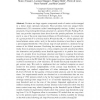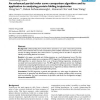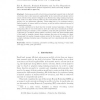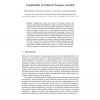437 search results - page 11 / 88 » Resource-efficient computing paradigm for computational prot... |
ISBRA
2007
Springer
14 years 1 months ago
2007
Springer
Proteins are large organic compounds made of amino acids arranged in a linear chain (primary structure). Most proteins fold into unique threedimensional (3D) structures called inte...
OHS
2000
Springer
13 years 11 months ago
2000
Springer
Abstract. Structural computing is a new paradigm for developing applications in new domains. One of its benefits is that adaptation of behavior--as a consequence of changes of the ...
BMCBI
2008
13 years 7 months ago
2008
Background: Understanding how proteins fold is essential to our quest in discovering how life works at the molecular level. Current computation power enables researchers to produc...
NPL
2007
13 years 7 months ago
2007
Autonomous mobile robots form an important research topic in the field of robotics due to their near-term applicability in the real world as domestic service robots. These robots ...
WABI
2007
Springer
14 years 1 months ago
2007
Springer
Graph-theoretic models have come to the forefront as some of the most powerful and practical methods for sequence assembly. Simultaneously, the computational hardness of the underl...




